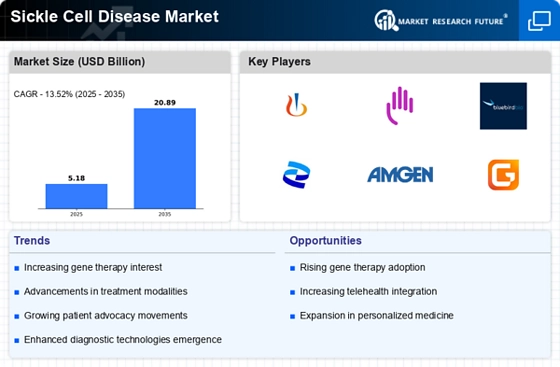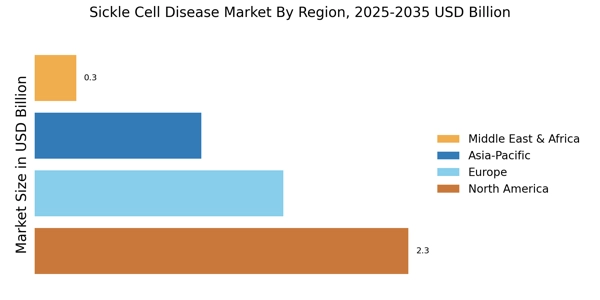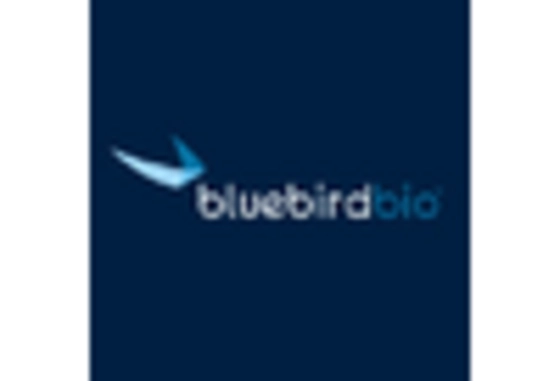Growing Awareness and Education
Growing awareness and education regarding Sickle Cell Disease Market are vital drivers of the Sickle Cell Disease Market. Increased public knowledge about the disease, its symptoms, and available treatments is leading to higher rates of diagnosis and treatment-seeking behavior. Educational campaigns by non-profit organizations and healthcare providers are instrumental in disseminating information. As awareness rises, more individuals are likely to seek genetic counseling and screening, which can lead to earlier interventions. This trend is expected to contribute to market growth, as a better-informed patient population demands more comprehensive care and innovative solutions within the Sickle Cell Disease Market.
Government Initiatives and Funding
Government initiatives and funding play a crucial role in the Sickle Cell Disease Market. Various countries are implementing policies aimed at improving healthcare access and treatment for Sickle Cell Disease Market. For example, national health programs are increasingly focusing on screening and early diagnosis, which is essential for effective management. Additionally, funding for research and development of new therapies is on the rise, with governments allocating resources to combat this public health challenge. This financial support is likely to foster innovation and expand treatment options, ultimately benefiting patients and driving growth in the Sickle Cell Disease Market.
Advancements in Treatment Modalities
Recent advancements in treatment modalities are reshaping the Sickle Cell Disease Market. Innovative therapies, including gene editing techniques and novel pharmacological agents, are emerging as potential game-changers. For instance, the introduction of hydroxyurea has shown promise in reducing complications associated with Sickle Cell Disease Market. Furthermore, the development of gene therapies, such as CRISPR-Cas9, offers hope for long-term solutions. The market is projected to witness substantial growth, with estimates suggesting a compound annual growth rate of over 10% in the coming years. These advancements not only enhance patient outcomes but also attract investment and research interest, thereby driving the Sickle Cell Disease Market.
Emerging Markets and Demographic Shifts
Emerging markets and demographic shifts are influencing the Sickle Cell Disease Market. As populations in developing regions grow, the incidence of Sickle Cell Disease Market is expected to rise, particularly in areas where the disease is endemic. Urbanization and migration patterns are also contributing to changes in disease prevalence. These demographic shifts create a pressing need for improved healthcare infrastructure and access to treatment. Consequently, pharmaceutical companies are increasingly focusing on these emerging markets, recognizing the potential for growth. This trend is likely to drive innovation and investment in the Sickle Cell Disease Market, as stakeholders seek to address the unique challenges posed by these evolving demographics.
Rising Prevalence of Sickle Cell Disease
The increasing prevalence of Sickle Cell Disease Market is a primary driver of the Sickle Cell Disease Market. It is estimated that millions of individuals are affected by this genetic disorder, particularly in regions with high malaria prevalence. The World Health Organization indicates that Sickle Cell Disease Market affects approximately 300,000 births annually, with a significant number of cases in Africa and parts of India. This rising incidence necessitates enhanced healthcare services and treatment options, thereby propelling the market forward. As awareness grows, more patients seek diagnosis and treatment, further stimulating demand for innovative therapies and management strategies within the Sickle Cell Disease Market.


















Leave a Comment